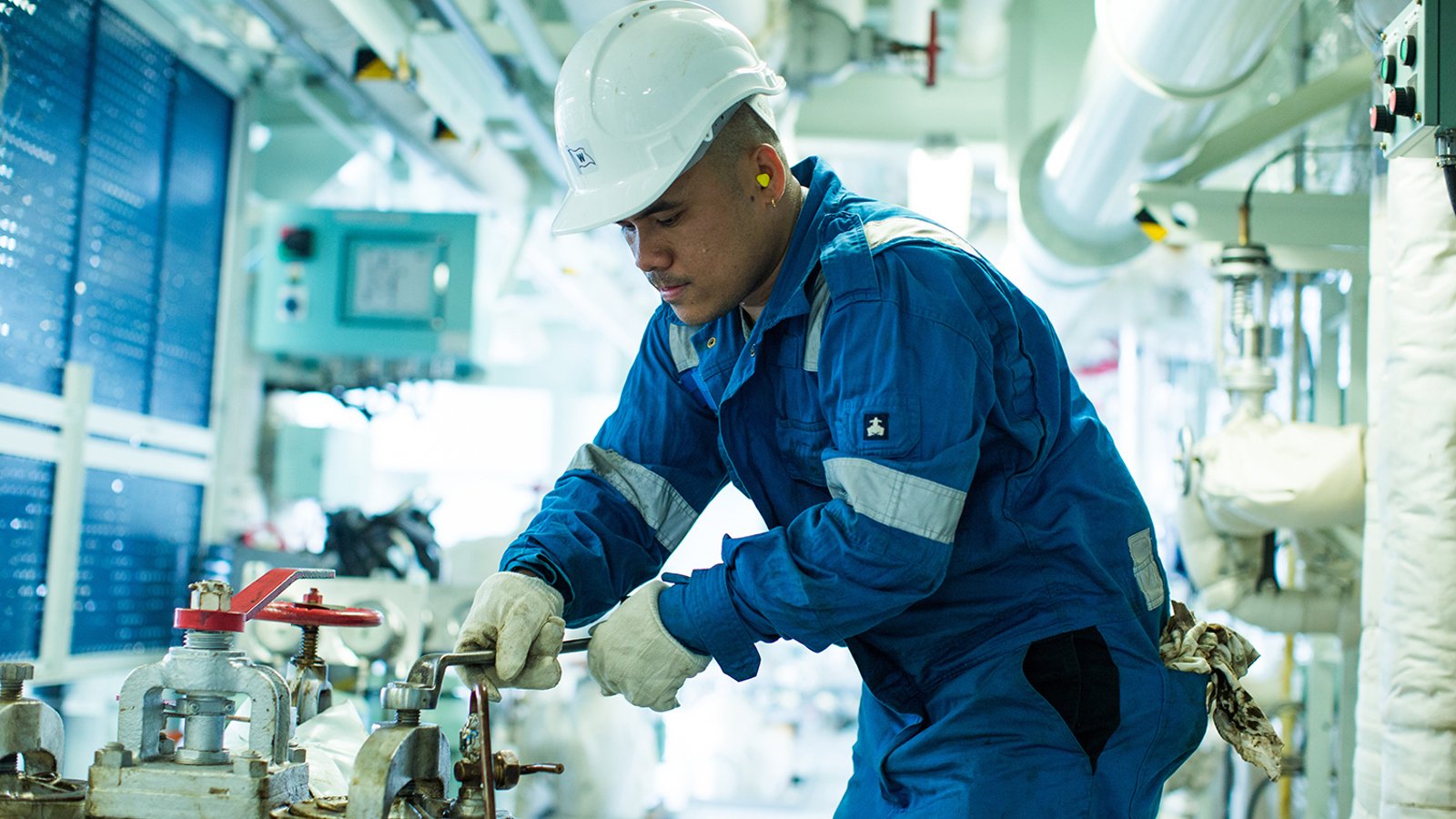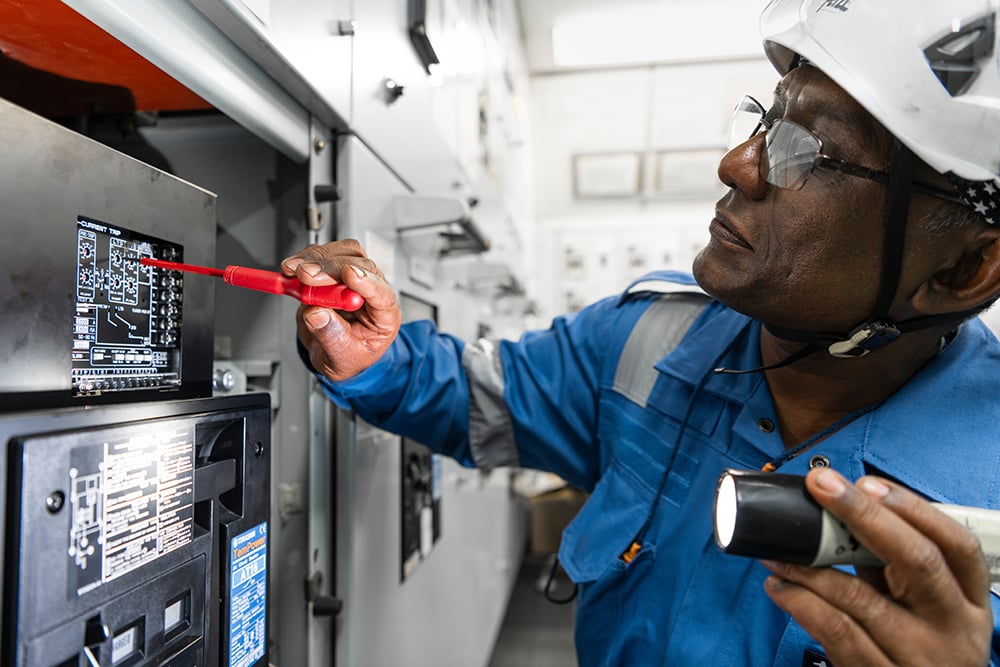Onboard Ship Maintenance: Key Procedures & Best Practices

Wilhelmsen insights
|
Wilhelmsen Ship Management
Embark on a voyage of efficiency with us through a comprehensive guide to a ship maintenance procedures, ensuring compliance with regulations while maximizing operational reliability. From proactive strategies to real-time condition monitoring, elevate your maintenance game to secure a sustainable and dependable maritime future.
What is Vessel Maintenance?
Ship owners and ship managers have a vital duty to perform ship maintenance to keep the vessel operating and safely. There are many different tasks involved in this, from straightforward and simple maintenance like draining, inspecting, and cleaning to major overhauling of engine components and various retrofits. Compiling the checklist, carrying out the maintenance, and recording them are part of the maintenance routines.
Efficient ship maintenance is not just a task; it is a key factor in the sustainability and dependability of a ship, preventing failures and prolonging its durability. It also leads to reduced expenditures and a smaller carbon footprint, which is essential for reducing global warming. This is a testament to the skills and dedication of maritime professionals, who ensure that both small and large machines are serviced periodically and in a timely manner to run efficiently.
The primary aim of a maintenance plan is to ensure that tasks are completed within timelines and in a rational way, while also ensuring that the vessel meets industry standards and regulations. Adherence to these standards is not just a requirement; it's a crucial part of maritime operations. The International Safety Management Code (ISM) imposes the planned ship maintenance system, underlining its role as a cornerstone of maritime operations.
A Ship's maintenance procedures are regular and merely a general overview of them. They include:
- Routine Maintenance: Comprehensive periodic inspections and equipment maintenance are performed to prevent failure. This is essentially the Planned Maintenance System (PMS).
- Corrective Maintenance: The necessary equipment maintenance routine will be implemented after any breakdowns or issues with the equipment or systems are encountered.
- Preventive Maintenance: Scheduled or routine maintenance is necessary to keep all operational areas free from unforeseen equipment failure.
- Predictive Maintenance: Employing data analysis principles to forecast and forestall potential issues before they materialize.
- Condition-Based Maintenance: Real-time assessment and decision-making regarding the condition of components to determine necessary maintenance actions. Implementing CBM requires a thorough Risk Assessment in consultation with equipment manufacturers.
Implementing these routines serves as crucial checkpoints to ensure that every part of the ship, from the engines to the decks, remains in optimal condition. This helps maintain the ship's overall functionality and operational efficiency.
Types of Maintenance Procedures
- Preventive Maintenance System (PMS): A proactive approach that involves scheduling and documenting maintenance activities in advance. The primary aim is to reduce downtime by ensuring that all necessary resources, such as labor and parts, are readily available. This systematic approach is a critical part of the life cycle that all ships undergo to maintain operational readiness and efficiency.
- Condition-Based Maintenance (CBM): Utilizes data analysis tools, performance monitoring per maker's guidelines, and techniques to monitor the condition of equipment and detect any anomalies or potential defects. By addressing these issues before they lead to equipment failure, CBM helps maintain continuous operation and reduces the likelihood of unexpected breakdowns, as well as saving costs. This maintenance is performed while the asset is operational, minimizing operational disruptions.
- Corrective Maintenance: Often unplanned or reactive, is performed in response to unexpected failures or issues. It involves repairs, replacements, or inspections that arise without prior planning. This type of maintenance typically results from equipment failures that were not predicted and require immediate attention to restore functionality. Condition-Based Maintenance, on the other hand, is a proactive approach that employs data analysis to identify potential issues before they cause equipment failure.
How to Ensure Good Ship Maintenance
- Ensuring Data Accuracy: Maintaining accurate data is essential for effective ship maintenance operations. By establishing clear data standards and protocols, uniformity across the entire fleet can be achieved, mitigating errors, duplication, and inconsistencies. Regular monitoring and auditing of the Planned Maintenance System (PMS) data are indispensable to uphold its accuracy and integrity. This involves defining protocols for data sources, formats, validations, and workflows governing input, updates, and access.
- Facilitating Communication: Effective communication plays a pivotal role in the efficiency of ship maintenance endeavors. Implementing user-friendly interfaces globally and streamlining data transfer between offices and ships can significantly enhance communication and optimize time utilization. The PMS is a pivotal tool for reporting to ship management, documenting internal and external audits, and providing a comprehensive resource in way of keeping maintenance records for future analysis and reference.
- Ensuring Compliance with Regulations: Adhering to regulations, particularly those outlined in the International Safety Management Code (ISM), is imperative for meeting safety and environmental objectives in maritime operations. Implementing a robust Planned Maintenance System (PMS) is integral to compliance efforts, as it automates vessel maintenance processes and ensures adherence to maker, classification society, and Flag State requirements. Staying abreast of the latest regulations and conducting regular assessments are vital for compliance. For example, adhering to laws such as the IMO's 2020 sulfur cap requires preparing PMS data for equipment like Exhaust Gas Cleaning Systems (EGCS) or scrubbers, tailored to vessel specifications.
- Emphasizing Proactive Maintenance: Proactive maintenance strategies are essential for sustaining operational efficiency and safety standards. Prioritizing proactive maintenance initiatives helps mitigate the escalation of minor issues, thereby reducing the likelihood of costly repairs and downtime. Compliance with the ISM Code's mandate for a Planned Maintenance System (PMS) facilitates automated maintenance scheduling, ensuring timely inspections and repairs to enhance overall safety and operational effectiveness.
Far from being just an important component of maritime operations, ship maintenance is a key pillar that defines our success and underscores the importance of safety, efficiency, and service life on board, including crew safety. Adhering to a precise maintenance schedule enables ship owners and operators to minimize defects, enhance performance, maintain budgets, and extend the vessel's useful life.
Utilizing PMS capabilities allows for the identification and resolution of issues before they escalate into costly repairs, creating excessive problems and an unsafe atmosphere on board. Among its many advantages, PMS provides valuable information on ship material inventories, facilitating proper planning for projects involving equipment upgrades or replacements. In summary, PMS encompasses two main areas: preventive and remedial work, both are essential for safeguarding sea voyages, ensuring efficient and safe operations, and maintaining shipping standards

Far from being just an important component of maritime operations, ship maintenance is one of its key pillars that define success as well as the importance of safety, efficiency, and service life on board. One way to accomplish this is by adhering to a precise maintenance schedule, which allows ship owners and operators to limit defects, perform better, establish budgets, and extend the useful life of a vessel.
Taking advantage of PMS capabilities implies, that it can identify and tackle matters before they grow and become a high cost in repairs creating excessive problems. Among other advantages, PMS provides the best information on ship material inventories thus, allowing proper planning for projects that involve equipment upgrade or replacement. To wrap up, this function is made up of two areas: preventive and remedial works which are essential in the CVFM to protect sea voyages, ensure we operate efficiently and safely as well as maintain the shipping standards.
Please contact us if you have any questions or would like to know more information about our PMS services.